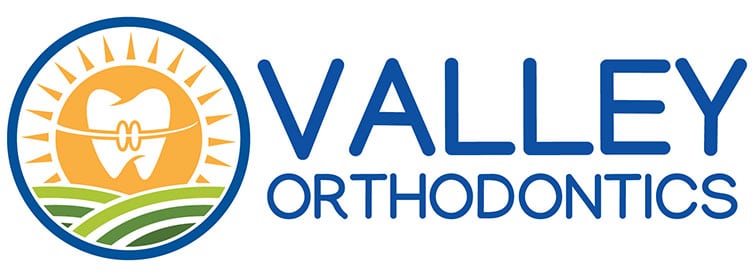Early Treatment
The American Association of Orthodontists recommends that every child see an orthodontist by age 7.
In some cases, an orthodontic concern may require an earlier orthodontic consultation. Around age 7, the first adult molars typically erupt, helping to define a patient’s back bite and allowing the orthodontist to more effectively evaluate the bite. Treatment at this age may not be necessary, but orthodontic monitoring can help anticipate the ideal timeline for the most effective treatment and also help to prevent more serious problems in the future.
Some results of effective early treatment:
- Reducing the need for tooth removal
- Creating space for crowded, erupting teeth
- Reducing the risk of injury to protruding front teeth
- Preserving needed space for permanent teeth
- Reducing future orthodontic treatment time
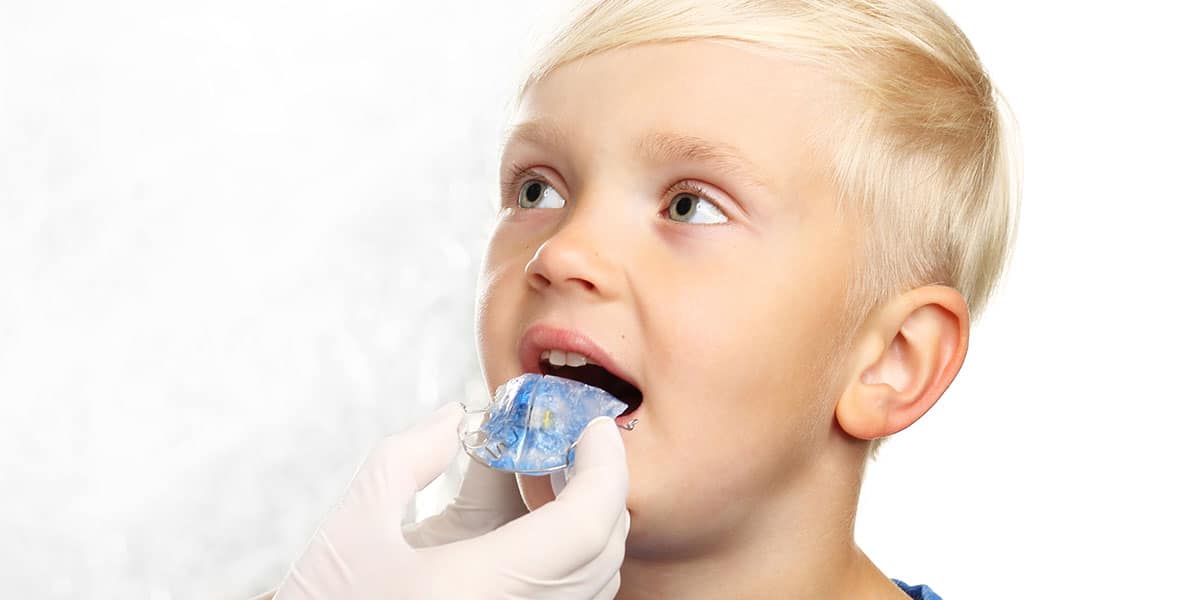
Picture shown: Removable expander
Appliances used during early treatment
Palate Expanders
There are two types of palate expanders - A fixed palate expander and a removable palate expander. Both removable and fixed palate expanders can be used to address crowding and other issues by expanding the upper jaw to make more room to accommodate tooth and/or jaw alignment. Expanders are designed to correct a narrow upper arch that causes crossbite, crowding, or impacted teeth. Estimated time of treatment is 9
months.
Fixed Palate Expanders
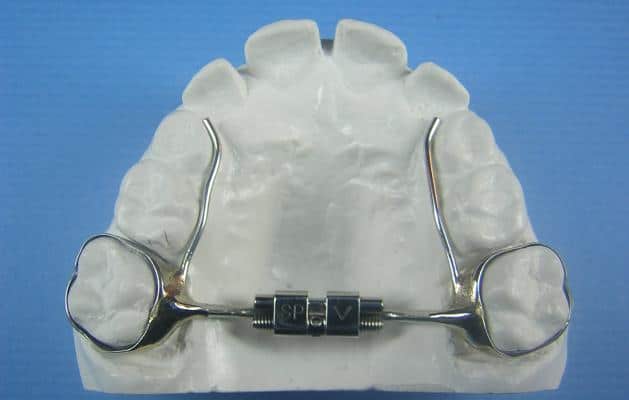
A fixed palate expander is an appliance that is secured in the mouth for the duration of the treatment. It is usually attached to the permanent first molars or primary second molars with bands.
Removable Palate Expanders
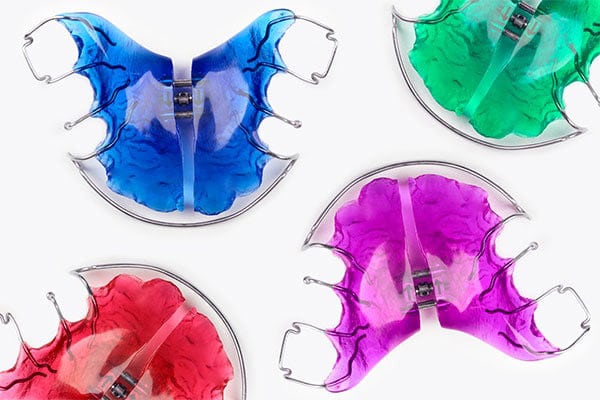
A removable palate expander is similar to a Hawley retainer—it is acrylic with metal clasps and is meant to be worn full time except when eating and brushing. You can choose from one of many cool designs and colors.
Schwartz Plate (Lower removable expander)
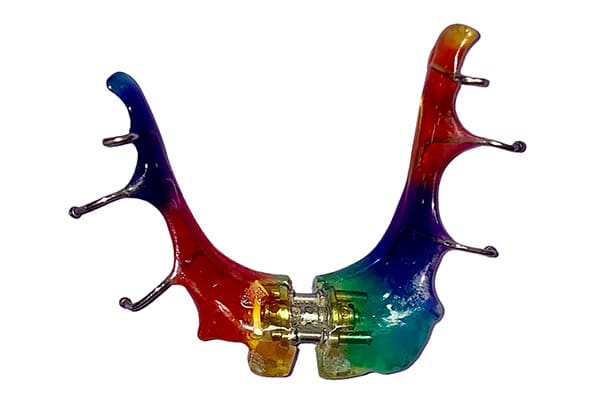
A removable expander is worn on the lower jaw full time except when eating and brushing. It is used to create space to prevent crowding, impacted teeth, and need for extraction of permanent teeth. It is turned with a special key just like a palate expander and can also be customized with cool colors and designs. If needed, your child can wear both an upper and lower expander at the same time.
E-Arch Appliance
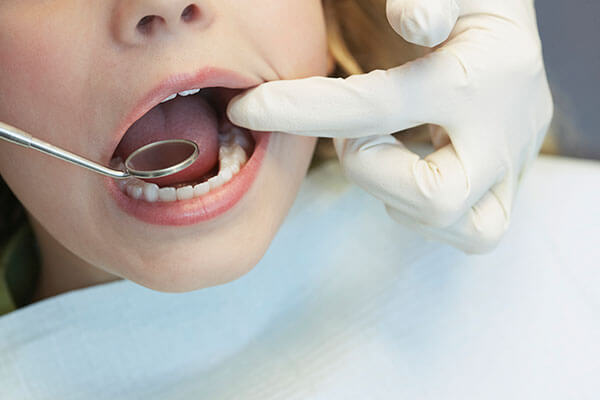
A lower fixed expander, or E arch, is an appliance that is permanently attached to the lower molars for the duration of treatment. It is used to create space for erupting teeth in the lower jaw. It is usually in place for 6-9 months, but can vary.
Mara Appliance
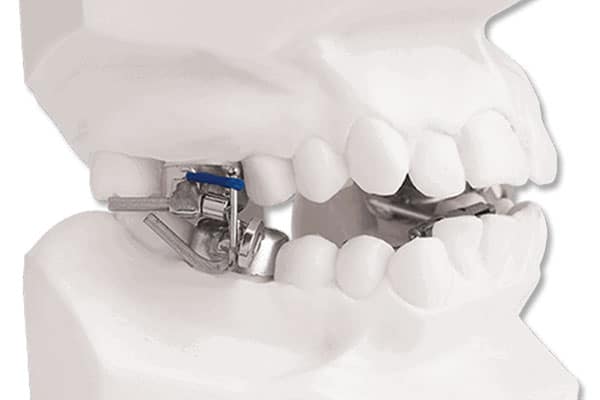
The MARA (Mandibular Anterior Repositioning Appliance) is a simple overbite and overjet corrector used in growing patients. The MARA is a fixed appliance, meaning it is attached to the teeth, and cannot be removed by the patient for the course of treatment. The appliance works by allowing the bottom jaw to move forward to meet the top jaw. The bent arms on the sides of the appliance (the Elbows) help posture the lower jaw comfortably forward, and, over the course of the treatment, this new bite will become permanent. The top part of the appliance can also include a palate expander, which corrects the width of the top jaw at the same time as the appliance works on the bite.
The MARA only works in growing patients. For this reason, it is ideal to start treatment with the MARA when your child is in their active growth spurt. A patient who is past their peak growth may not benefit from the maximum overbite and overjet correction. The MARA appliance stays in the mouth for approximately 9-12 months. Sometimes it can be followed directly by braces, or, if your child is not ready for comprehensive orthodontic treatment, a rest period of several months may be indicated prior to braces in which time Dr. Kroboth will continue to monitor growth and development.
Phase I Braces
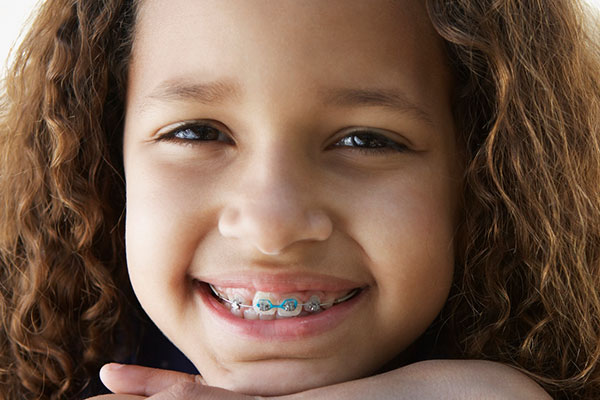
Braces are used to fix crossbites and create space for erupting teeth. Phase one braces can be used in conjunction with a palate expander or MARA appliance.
Hawley Retainer
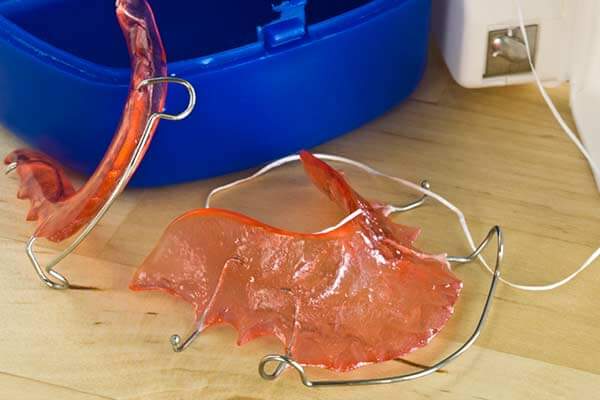
A Hawley retainer is a custom removable acrylic retainer with metal clasps that fit around the teeth. Generally, a Hawley retainer is worn at night to maintain the alignment of the teeth after phase I treatment.
